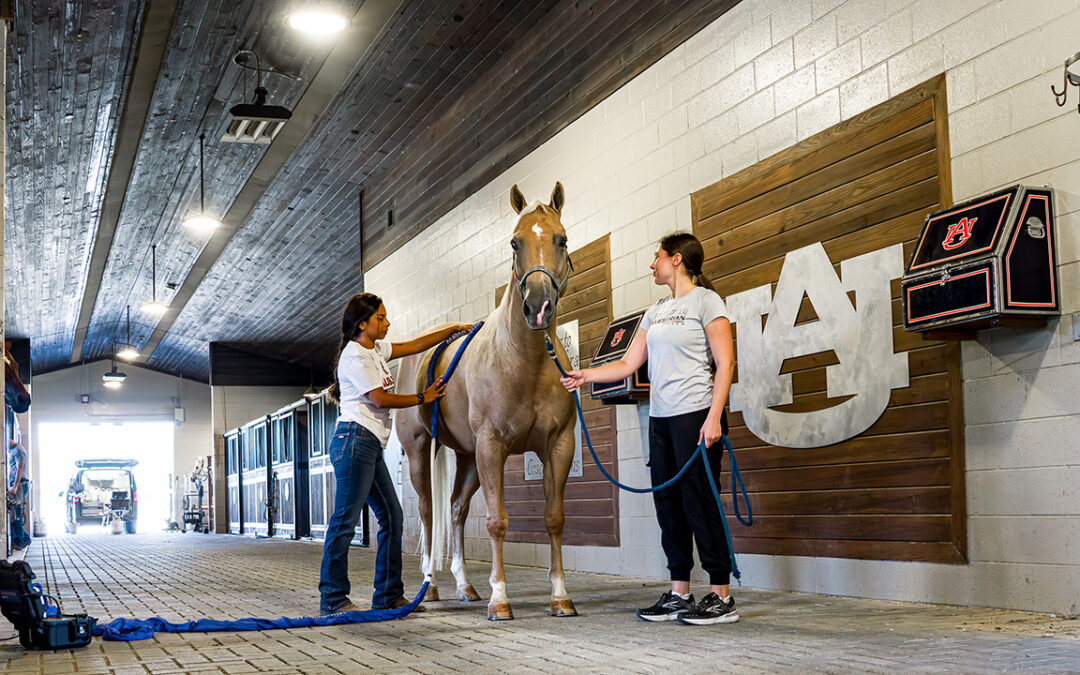The challenges facing today’s small- and medium-sized farm operators are numerous, but perhaps the most daunting challenges are those faced by beginning farmers in a business climate that is currently in the midst of a generational turnover.
A three-year study by Auburn University’s Valentina Hartarska, Alumni Professor in the Department of Agricultural Economics and Rural Sociology, and a team of ag economists from Auburn and North Carolina State University seeks to help new producers in the Southeast.
Supported by a $500,000 award from the United States Department of Agriculture’s National Institute of Food and Agriculture, or USDA-NIFA, Hartarska and her team are developing an analytical framework to evaluate the efficiency and productivity of successful beginning farmers. The project would help these farmers make better business decisions based on such factors as market volatility and shocks, climate change and other variables.
“The main goal of our research is to help small- and medium-sized beginning farmers in the Southeast to sustain their farming activities and to prosper through improved efficiency and productivity, better access to health care and by lowering the hurdles in the initial states of their operation,” Hartarska said. “We also are interested in providing information that can help an emerging increase in women who are entering farming today.”
One of the most vexing problems in today’s farming industry is the generational turnover, according to Hartarska.
“Farming is experiencing a time when older farmers are leaving and younger farmers are entering the industry,” Hartarska said. “For every farmer under age 35, there are four farmers who are over the age of 65, and more than half of landowners are older than 65.
“This research is important because this new generation of farmers is different, they face different sets of challenges and they need business information and business tools that can help them to remain viable in the future of farming.”
Hartarska and her colleagues, Denis Nadolnyak, professor of agricultural economics at Auburn, and Ivan Kandilov, associate professor of agricultural economics at North Carolina State University, are utilizing data from the USDA’s Census of Agriculture which is collected every five years. Their study — which they hope to expand — is presently focused on small- and medium-sized farms in the Southeast.
“We have five objectives in our project,” Hartarska said.
They are:
- Identify agricultural industries and niche markets in the Southeast attracting beginning farmers of small- and medium-size and identify factors affecting their survival;
- Employ novel empirical models to identify how each industry group and subgroup of beginning farmers can improve their productivity and efficiency;
- Evaluate to what extent state and federal governmental support programs improve survival and economic efficiency of each group of small and medium-sized beginning farmers;
- Identify how limited access to health insurance and affordable health care services affects sustainability, entry and retention of beginning farmers and their hired workers; and
- Identify constraints and opportunities specific to female beginning farmers in the region.
Hartarska is especially enthusiastic about exploring the last objective and hopes that her research would be helpful to female farmers in the region.
In the Southeast, the share of beginning farmers increased by more than 20 percent between the last two Census of Agriculture rounds, Hartarska said. In each southeastern state, this share is higher than the national average of 27 percent.
“Beginning farmers and ranchers make an outsized contribution to important new categories of agriculture, and women producers are entering farming in larger proportions than men,” Hartarska said.
“Even though less than a third of new entrants survive, research identifying which producers survive and thrive and why is lacking. Therefore, understanding the challenges to and opportunities for these new farmers is timely and important. The results of our work will assist farmers, farmer groups, extension programs, and policymakers in decision-making to develop strategies that enhance the economic efficiency, sustainability and competitiveness of small- and medium-sized beginning farmers.”




